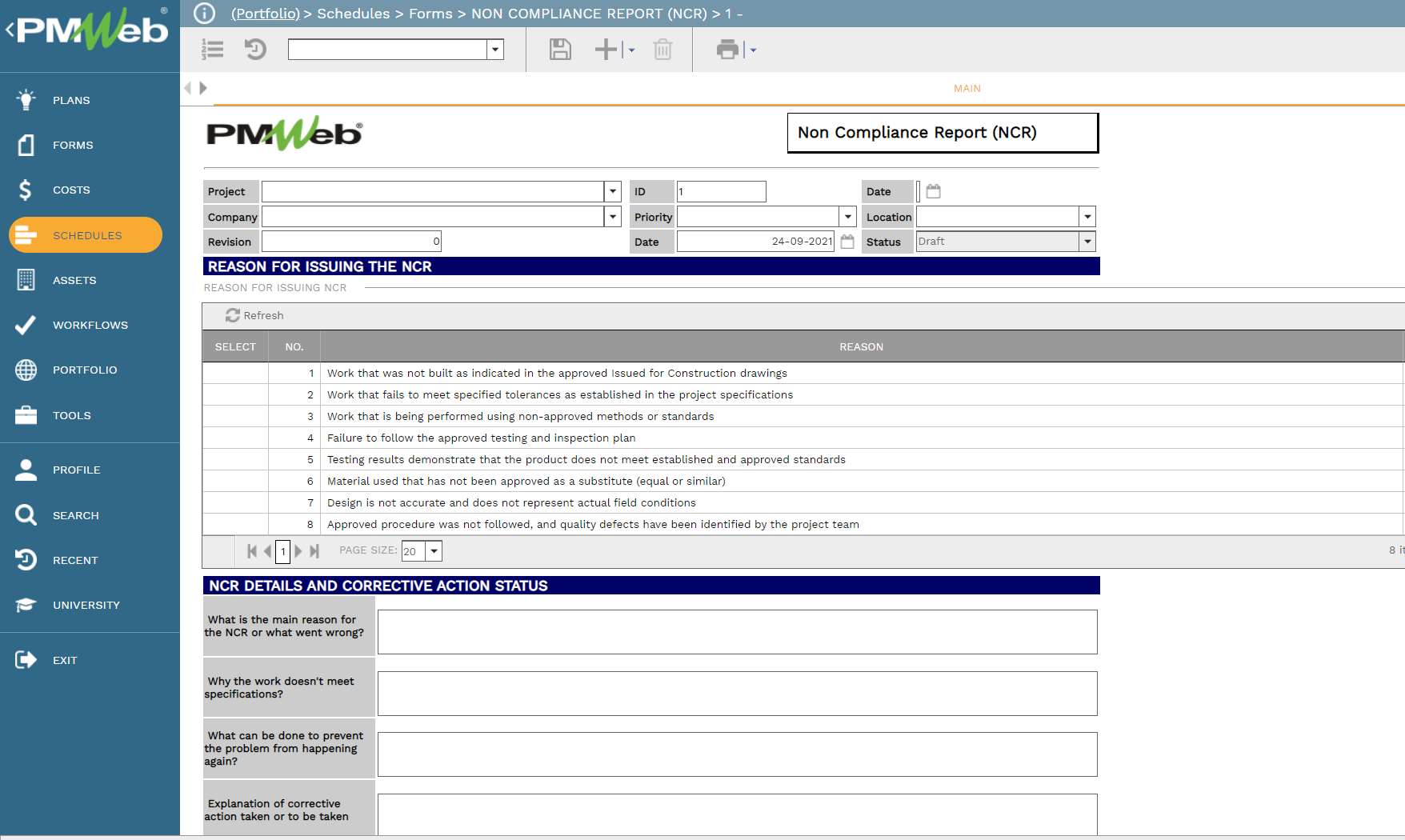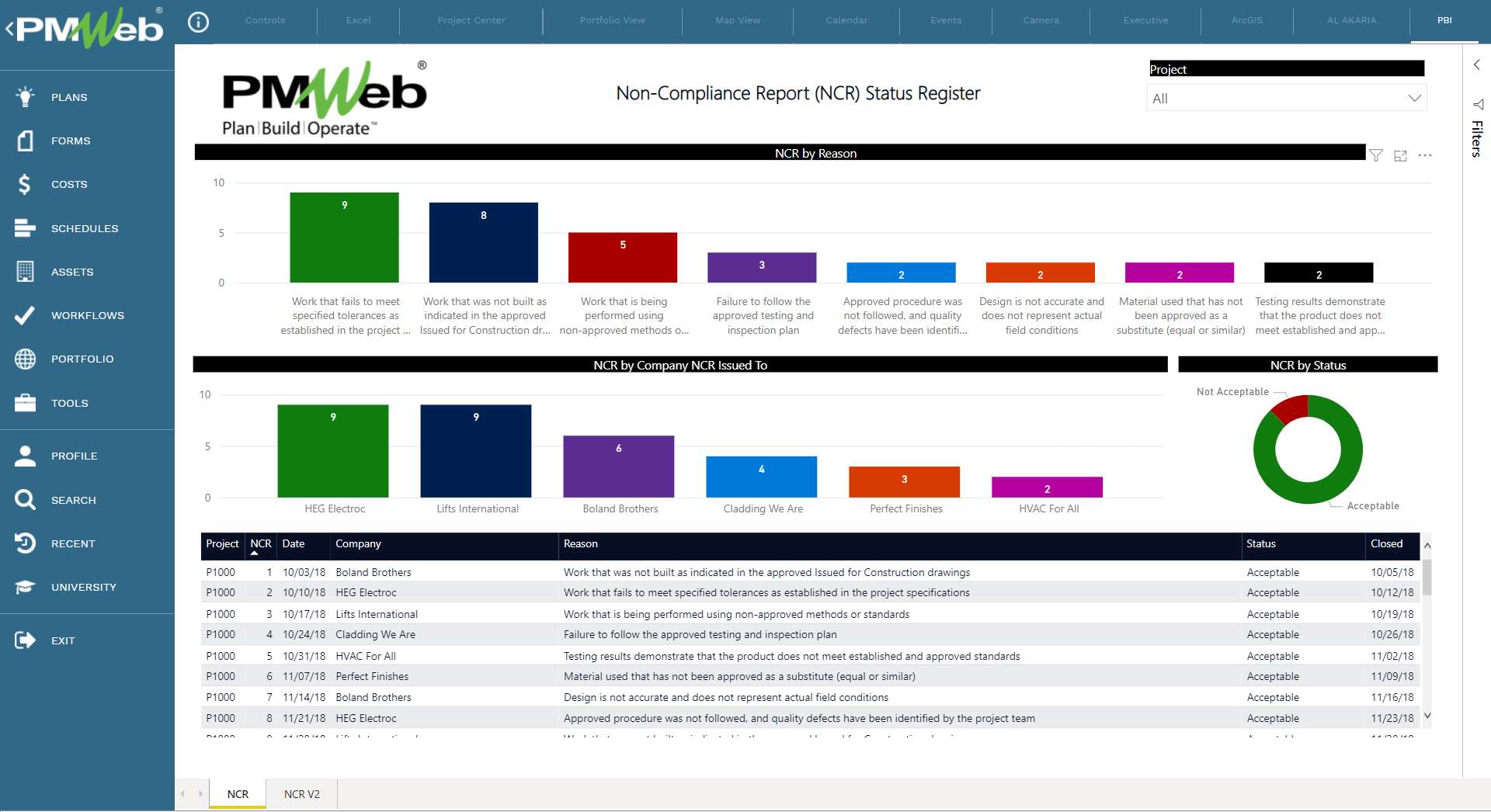The Non-Compliance Report (NCR) is one of the quality controls processes that must be managed in any project control system (PCS) whether the PCS was managed by the project owner or the contractor. The difference between a project control system (PCS) that is managed by the project owner or the contractor is the ownership of the data captured in the non-compliance reports.
The PMWeb visual custom form builder is used to develop the NCR form with all the data fields that are common to this business process. Nevertheless, it is highly recommended that the form includes a table that lists all possible reasons for issuing an NCR. The list should be aligned with the conditions of contract agreement clauses that necessitate the issuance of the NCR.
The template attachment tab allows uploading and attaching pictures of the reported NCR. In addition, links to relevant PMWeb records like meeting minutes, and daily reports, among others, can be made to the NCR. Further, a workflow gets assigned to the NCR to ensure its formal review and approval of the corrective actions taken before closing the NCR.

The NCR log captures the details of all NCRs issued and their status. The report could include visuals to summarize the issued NCR by reason, company the NCR was issued to, number of NCRs issued per month, and corrective action status. The report could also include a list of NCRs where the corrective action status is still acceptable. Of course, it is also possible to create a tabular report that provides a list of all issued NCRs showing the captured details and their status. The NCR report can be specific to a project, program, or portfolio of projects.

Reference
The content of this article was extracted from the book titled “Let’s Transform: Enabling Digital Transformation of Capital Construction Projects Using the PMWeb Project Management Information System – 2nd Edition” written by Bassam Samman.
The book provides project owners with oversight on how technology available today can support their efforts to digitally transform the management of their projects’ portfolios. For each capital project life cycle stage, PMWeb is used to detail how the relevant project management business processes can be digitalized to enforce transparency and accountability in delivering projects. In addition, MS Power BI was used to show how the real-time, trustworthy data captured in PMWeb can be aggregated, modeled, monitored, evaluated, analyzed, and reported at anytime, anywhere using any device.



